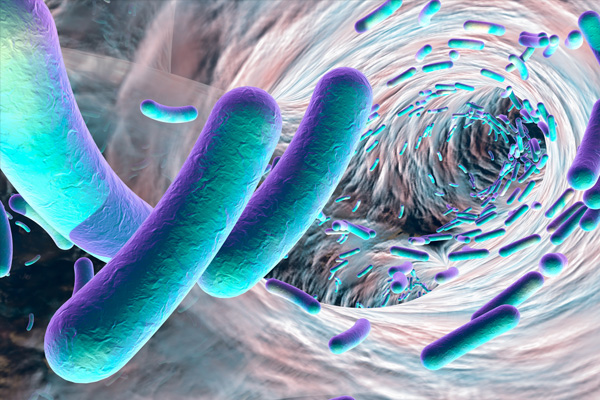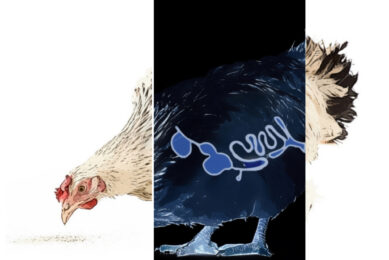Antibiotics help Salmonella to flourish

Recent research has highlighted why Salmonella gastroenteritis can easily emerge after an antibiotic treatment. In light of the focus on reducing antibiotic use in animals, this might yet be another argument why minimising its usage is so important.
Antibiotics create a shift in the microflora, reducing the production of SCFAs like butyric acid, which opens the path for Salmonella to flourish. More insights in the exact mechanism might help us find ways to overcome this negative impact in case antibiotic treatment is necessary.
Butyrate, Energy and Cell Oxygenation
SCFAs are organic acids produced naturally by the body as byproducts when dietary fibre and indigestible saccharides in the large intestine are fermented by the microbiota in the gastrointestinal system. Of the common SCFAs, butyrate has perhaps been the most studied, being the preferred metabolite for colonocytes.
Butyrate is taken up by the epithelial cells and provides a source of ATP – which transports energy – when it is oxidised within the cell. This energy drives a sodium pump which maintains the osmotic balance in the gut, allowing water to be absorbed and the relatively liquid digesta to be turned into more solid faecal matter.
This process of energy production as butyrate is used up to produce ATP, consumes oxygen and results in the production of carbon dioxide. This oxygen depletion makes the epithelium a hypoxic (low oxygen) environment. In turn, the gut lumen becomes more anaerobic – thus favouring the clostridial bacteria that are important in endogenous butyrate production. In other words, a virtuous positive feedback loop is created.
Salmonella as a pathogen
It’s been shown that both Salmonella typhimurium infection and antibiotic treatment cause depletion of the clostridial bacteria that are most important in preventing expansion of commensal E. Coli and maintaining ‘balance’ in the microbiota. The effect of this is for the colonocytes to switch to produce more energy from glucose and glucose fermentation conserves oxygen in the cell. As a result of this oxygen conservation, the oxygen levels of the epithelium rise and oxygen diffuses into the gut lumen.
An increasing level of oxygen in the lumen encourages more aerobic bacteria, such as Salmonella to increase, with shedding of the pathogen in high numbers and the potential for transmission to other animals kept in the same environment. When antibiotic treatment is given, it can also destroy clostridial bacteria and the same mechanism takes place – with the result of increasing S. typhimurium populations and increasing bacterial shedding.
Another layer of complexity is the influence of virulence factors. Virulence factors contribute to the pathogenicity of an organism and are molecules that enable either colonisation – such as cell attachment – or assist evasion of the host’s immune defences. In the case of S. typhimurium, the virulence factors play a role in depleting the butyrate-producing clostridia.
Limiting the effects of Salmonella infection
Opportunities to supplement the levels of endogenous butyrate might offer a way to resist or limit the effects of Salmonella infection. The options are to support the beneficial bacterial population using pre or probiotics, or to supplement SCFAs direct using coated forms or esters. Tributyrin is an esterified form of butyrin combining the butyrate molecule with glycerol: the bond between the 2 resists digestion in the stomach, only being broken down by intestinal pancreatic lipase to release butyric acid. Tributyrin supplementation is shown to increase the clostridial population and restore the epithelial hypoxia needed to blunt expansion of aerobic Salmonella.
There is much that remains to be understood of this relationship between the host and microbiota with SCFA as a unifying and potential co-ordinating force. Science is still just touching the surface when it comes to providing explanations for the positive benefits producers see when these supplements are given to their animals. There’s promise of much more to come.











